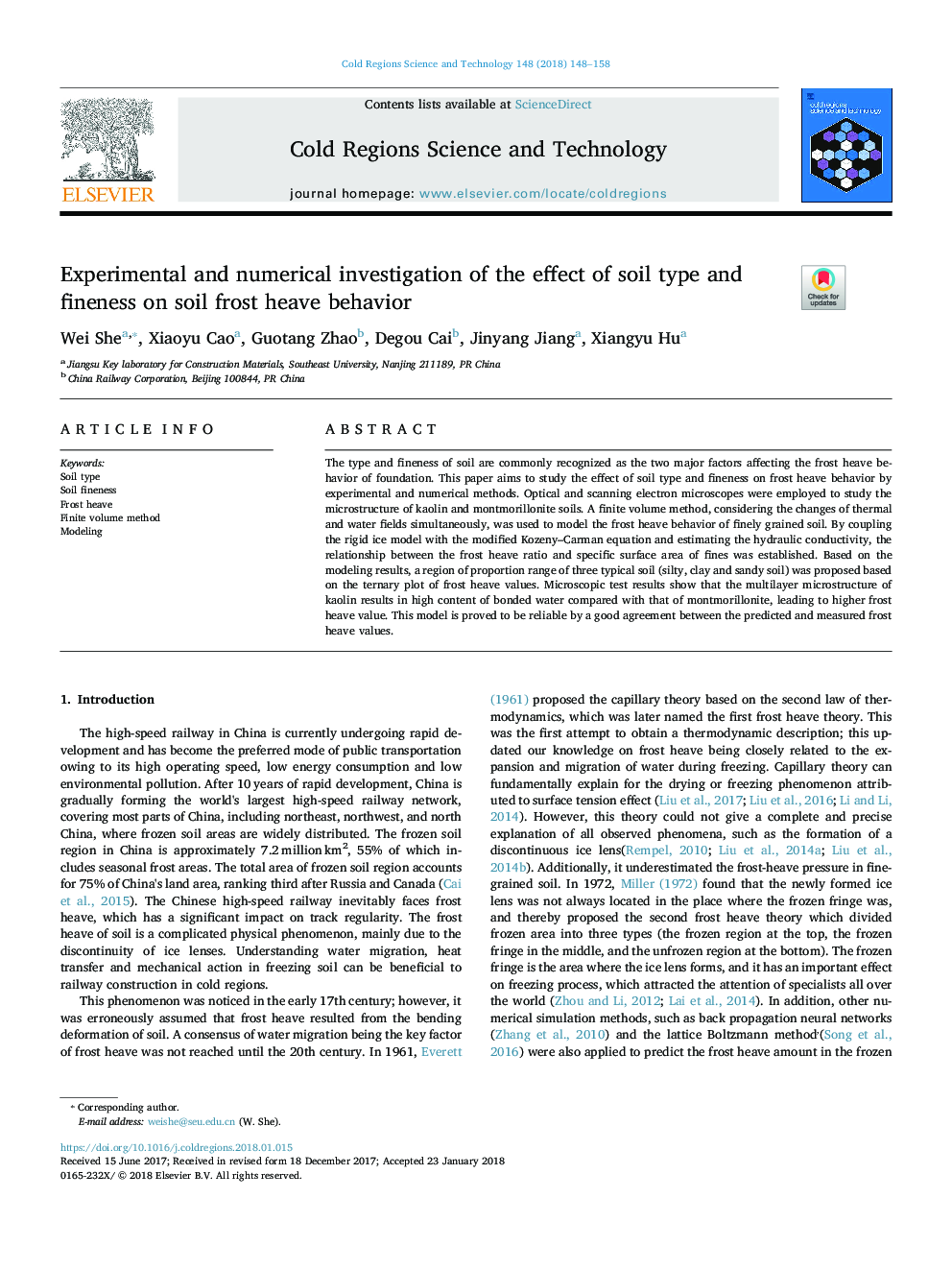| Article ID | Journal | Published Year | Pages | File Type |
|---|---|---|---|---|
| 8906551 | Cold Regions Science and Technology | 2018 | 11 Pages |
Abstract
The type and fineness of soil are commonly recognized as the two major factors affecting the frost heave behavior of foundation. This paper aims to study the effect of soil type and fineness on frost heave behavior by experimental and numerical methods. Optical and scanning electron microscopes were employed to study the microstructure of kaolin and montmorillonite soils. A finite volume method, considering the changes of thermal and water fields simultaneously, was used to model the frost heave behavior of finely grained soil. By coupling the rigid ice model with the modified Kozeny-Carman equation and estimating the hydraulic conductivity, the relationship between the frost heave ratio and specific surface area of fines was established. Based on the modeling results, a region of proportion range of three typical soil (silty, clay and sandy soil) was proposed based on the ternary plot of frost heave values. Microscopic test results show that the multilayer microstructure of kaolin results in high content of bonded water compared with that of montmorillonite, leading to higher frost heave value. This model is proved to be reliable by a good agreement between the predicted and measured frost heave values.
Related Topics
Physical Sciences and Engineering
Earth and Planetary Sciences
Earth and Planetary Sciences (General)
Authors
Wei She, Xiaoyu Cao, Guotang Zhao, Degou Cai, Jinyang Jiang, Xiangyu Hu,
